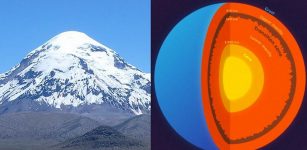Boolean Pythagorean Triples: Math Problem Solution That Takes 10 Billion Years To Read
MessageToEagle.com – If you like mathematics then you’ll know what a great feeling it is to finally solve a problem.
Some years ago, we heard about a teenager that solved after 300 years, solved Sir Isaac Newton’s mathematical riddle.
Now, it’s time for a new mathematical riddle.
The Boolean Pythagorean triples problem, has eluded mathematicians for decades. Now, it has finally been solved. The trouble is the math problem takes 10 billion years to read!
Boolean Pythagorean Triples is a long-unsolved enigma within a field called Ramsey Theory, named after the British mathematician and philosopher Frank P. Ramsey. It is a branch of mathematics that studies the conditions under which order must appear.

In the 1980s, Graham offered a prize of US$100 for anyone who could solve it. It was only $100, but prestige was more important to most scientists who attempted to solve the math riddle.
Finally, Marijn Heule, Oliver Kullmann and Victor Marek, three computer scientists of the universities of Texas, Swansea and Kentucky, respectively unveiled their proof at the international SAT 2016 conference in Bordeaux, France.
The three scientists announced the largest-ever mathematics proof consisting of a file that comes in at a whopping 200 terabytes, roughly equivalent to all the digitized text held by the US Library of Congress. Crunching the numbers took two days of computer time on the Stampede supercomputer at the Texas Advanced Computing Center.
See also:
Schoolboy Cracks Isaac Newton’s 300-Year-Old Mathematical Riddle
Divine Knowledge – Is God A Mathematician?
‘Principia Mathematica’ Monumental Work Published By Isaac Newton – On July 5, 1687
By their own account, they cracked the puzzle “using Cube-and-Conquer, a hybrid satisfiability testing (SAT) method for hard problems.”
It asks if it is possible to color positive whole numbers (such as 1, 2 or 3) either red or blue such that no sequence of numbers that satisfy Pythagoras’s famous equation—a2 + b2 = c2—are the same color.
If a and b are red, for example, then c could be blue. But all three could not be blue or red.
The proof shows that such a coloring scheme is, in fact, possible—up to the number 7,824. Beyond that, however, it doesn’t hold.
Although the computer solution has cracked the Boolean Pythagorean triples problem, it hasn’t provided an underlying reason why the coloring is impossible, or explored whether the number 7,825 is meaningful, says Kullmann. That echoes a common philosophical objection to the value of computer-assisted proofs: they may be correct, but are they really mathematics? If mathematicians’ work is understood to be a quest to increase human understanding of mathematics, rather than to accumulate an ever-larger collection of facts, a solution that rests on theory seems superior to a computer ticking off possibilities.
The researchers created a 68-gigabyte compressed version of their solution — which would allow anyone with about 30,000 hours of spare processor time to download, reconstruct and verify it, but a human could never hope to read through it because it would take 10 billion years to read.
MessageToEagle.com










